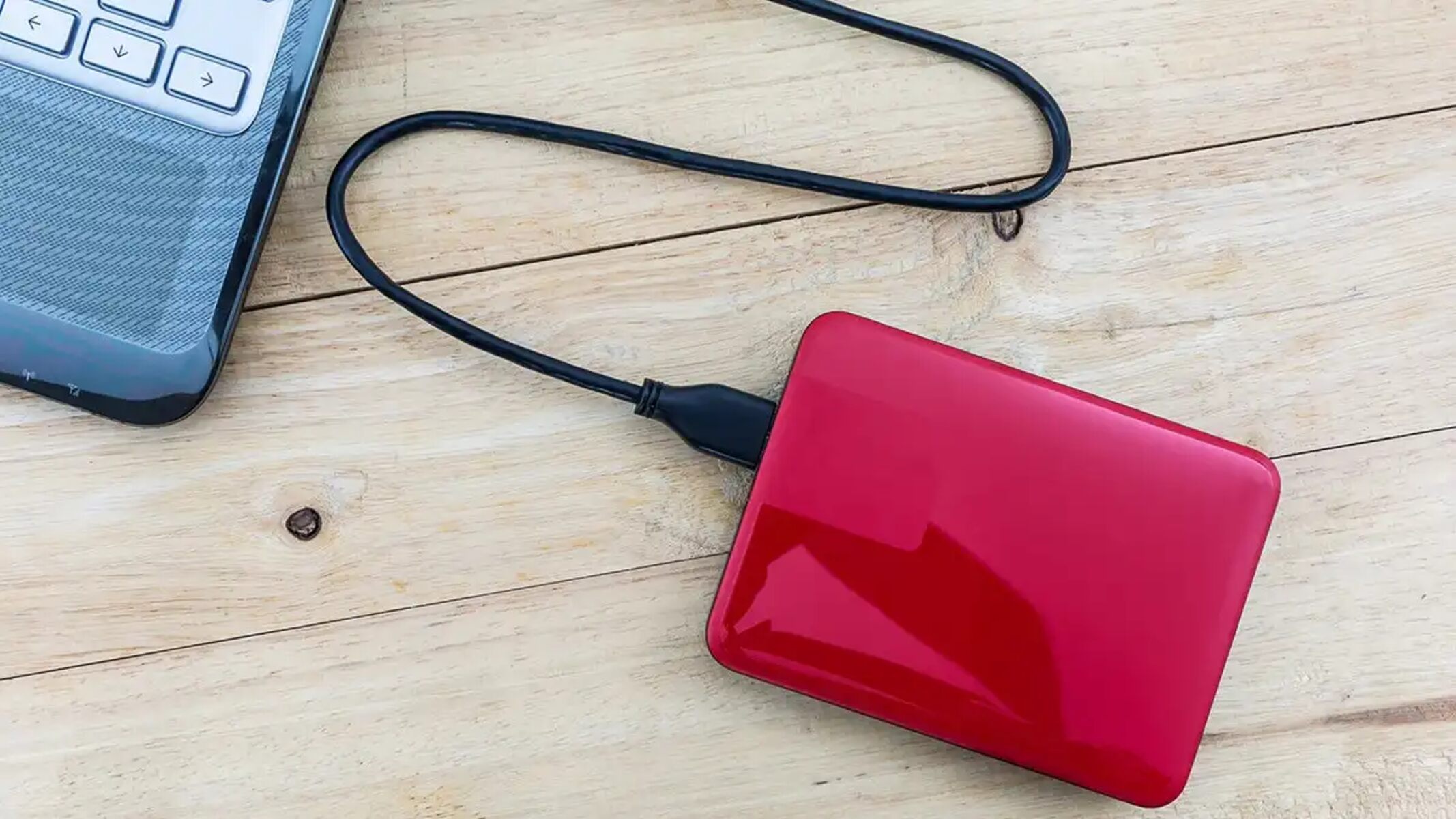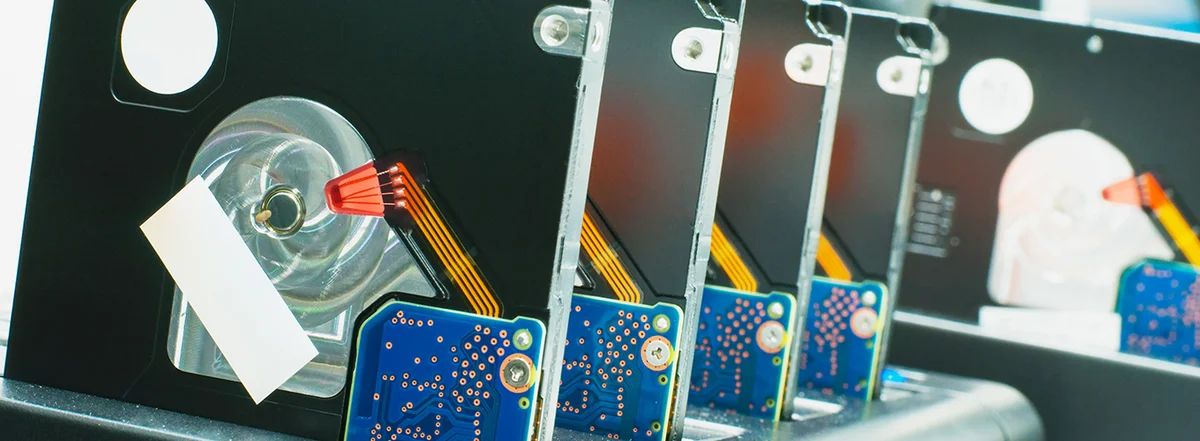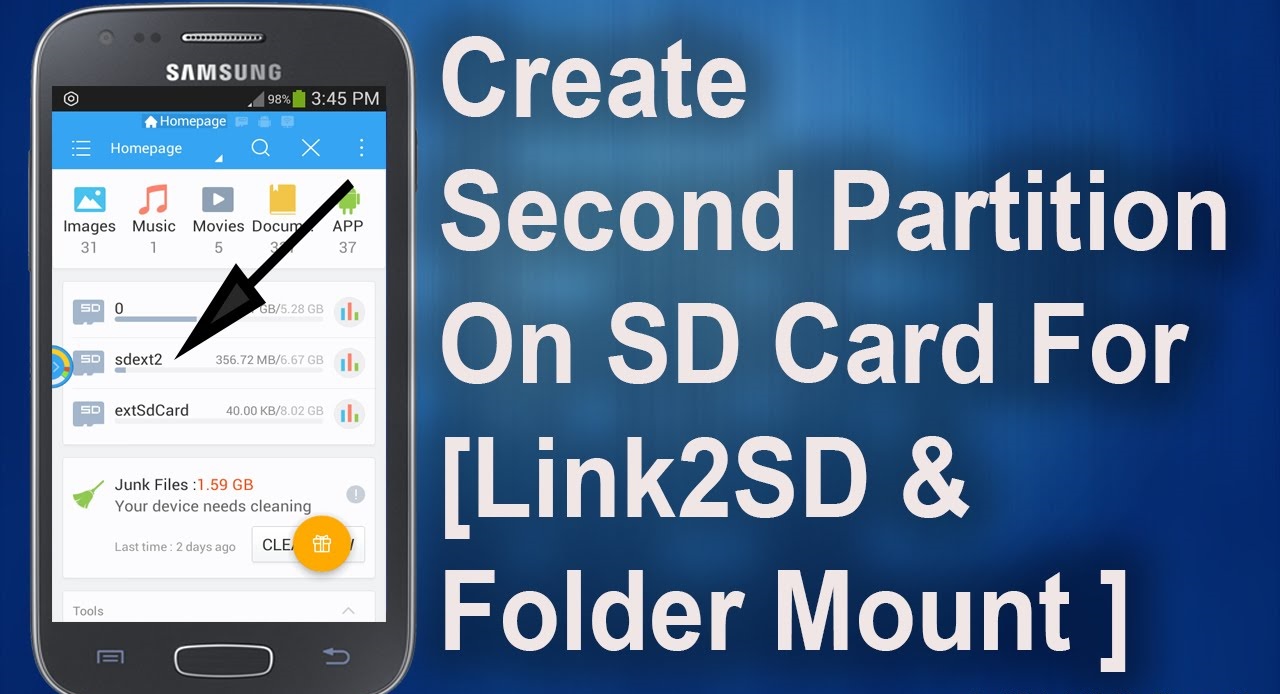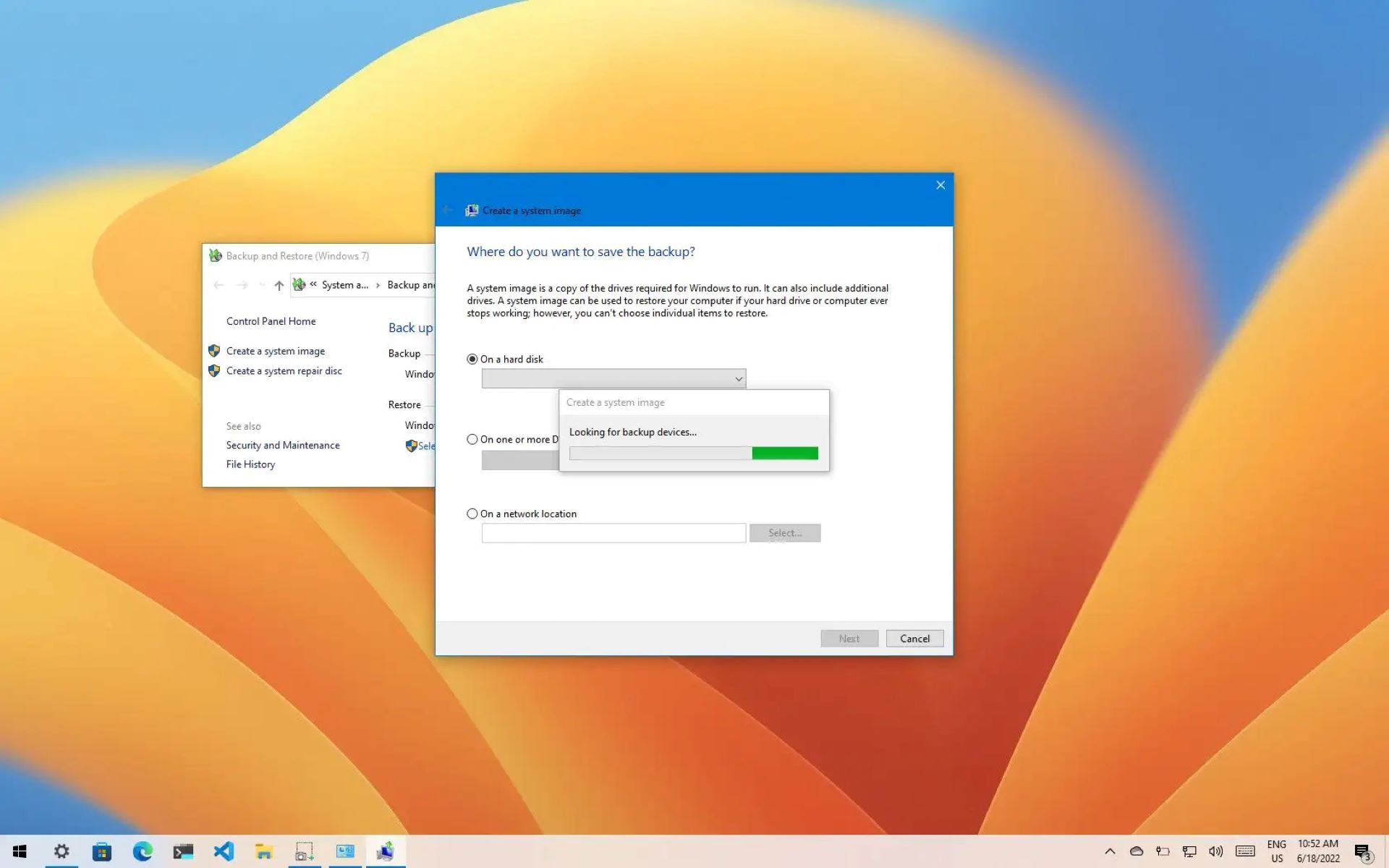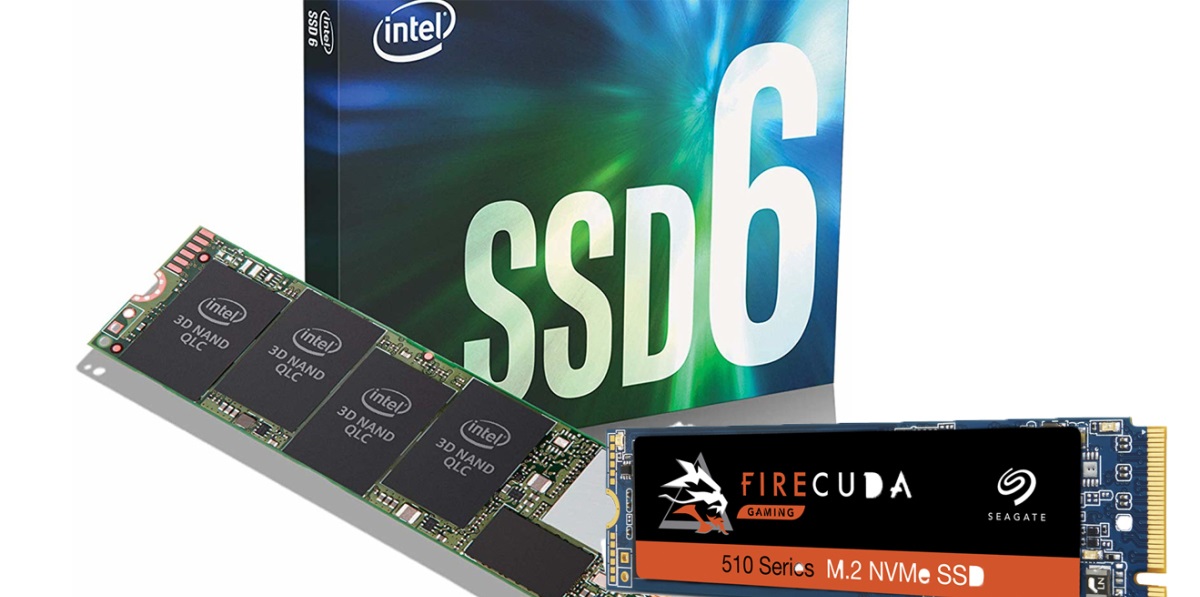Introduction
Creating a disk image is an essential step in securing your valuable data and ensuring that you have a complete backup of your system. Whether you’re a business owner, a professional, or a home user, having a reliable disk imaging solution is crucial in today’s digital world. One such solution is EaseUS Backup Workstation, a powerful and user-friendly software that allows you to make disk images effortlessly.
A disk image is an exact replica of a hard drive or a partition, including all files, programs, and even the operating system. It’s like taking a snapshot of your entire system, preserving everything in its current state. This snapshot can be invaluable in case of data loss, hardware failure, or even a malware attack. By creating a disk image, you can restore your system to its previous state quickly and easily, saving you time, effort, and potentially even money.
The benefits of creating a disk image are numerous. Not only does it provide a comprehensive backup of your system, but it also allows for easy system recovery, seamless migration to a new hard drive, and the ability to clone your system onto multiple devices. Additionally, disk imaging can be a valuable tool for system administrators, enabling them to deploy standardized system configurations across multiple computers.
Now that we understand the importance of creating a disk image, let’s delve into the step-by-step process of making a disk image using EaseUS Backup Workstation. We’ll go through each stage, from launching the software to verifying the integrity of the created image. By the end of this guide, you’ll be equipped with the knowledge and confidence to back up your system effectively.
What is a Disk Image?
A disk image is an exact copy of a hard drive, partition, or volume stored as a single file. It encompasses all the data, files, folders, and even the operating system within that drive or partition. Think of it as a snapshot of your entire system, capturing it at a specific point in time.
When you create a disk image, you’re essentially making a secure backup of everything on your hard drive. It’s like having a full-fledged duplicate of your system stored separately, allowing you to restore it back to its original state when needed.
What sets a disk image apart from regular file backups is its comprehensiveness. With a traditional file backup, you typically select specific files or folders to back up. But with a disk image, you capture everything in one go – the entire file structure, operating system settings, installed software, system configurations, and personal data. This ensures that you have a complete and accurate copy of your system, making it ideal for disaster recovery situations.
Creating a disk image is particularly useful in situations where you need to recover from a catastrophic system failure, such as a hard drive crash or a malware attack. Instead of reinstalling the operating system, software, and reconfiguring your system from scratch, you can simply restore the disk image and be up and running in no time.
Another advantage of disk images is their versatility. You can use them to migrate your entire system onto a new hard drive or even clone your system onto multiple devices. This makes it a handy tool for IT professionals, system administrators, and anyone who needs to replicate system configurations across multiple machines.
EaseUS Backup Workstation provides the functionality to create disk images with ease. By utilizing this powerful software, you can ensure the safety and security of your data by having a complete copy of your system readily available.
Why Make a Disk Image?
Creating a disk image is a critical step in safeguarding your data and ensuring business continuity. Let’s explore the reasons why making a disk image should be a top priority for you.
1. Data Protection and Recovery: Disk images provide an extra layer of protection for your valuable data and system. In the event of data loss due to hardware failure, accidental deletion, or malware attack, having a disk image allows you to quickly restore your entire system, including all files, settings, and applications. This ensures minimal downtime and prevents potential losses of critical data.
2. System Restore: Disk images enable a seamless system restore process. Instead of spending hours reinstalling the operating system, drivers, and applications, you can simply restore the disk image and have your system back to its previous state in no time. This is especially useful when faced with system crashes or corruption issues.
3. Easy Migration to New Hardware: When upgrading your hardware, such as replacing your hard drive or moving to a new computer, disk imaging simplifies the migration process. Instead of reinstalling everything from scratch, you can restore the disk image to the new hardware and have your system up and running with all your settings, files, and applications intact.
4. Disaster Recovery: In the face of catastrophic events like natural disasters or fires, having a disk image ensures that you can quickly recover your system and data. By storing your disk image in a secure, off-site location, you have a reliable backup that can be easily accessed and restored to get your business back on track.
5. Time and Cost Savings: Creating a disk image eliminates the need to individually reinstall the operating system, applications, and settings. This saves valuable time and effort, as well as potential costs associated with purchasing new software licenses or paying for professional assistance.
6. Cloning and Deployment: Disk imaging allows you to clone your system onto multiple devices, making it a valuable tool for system administrators and organizations. This simplifies the process of setting up standardized system configurations across various machines, ensuring consistency and efficiency.
In summary, creating a disk image is essential for data protection, system recovery, easy migration, and disaster preparedness. EaseUS Backup Workstation provides a reliable and user-friendly solution for making disk images, giving you the peace of mind knowing that your data is secure and your systems can be quickly restored in times of need.
System Requirements
Before you begin creating disk images with EaseUS Backup Workstation, it’s important to ensure that your system meets the necessary requirements. Here are the system specifications you need to consider:
1. Operating System Compatibility: EaseUS Backup Workstation is compatible with various Windows operating systems, including Windows 11, Windows 10, Windows 8.1, Windows 8, Windows 7, and Windows Server 2019/2016/2012/2008. Make sure your system is running one of these operating systems to ensure compatibility with the software.
2. Processor and RAM: The performance of the disk imaging process depends on your system’s processor and available memory. EaseUS Backup Workstation recommends a minimum of a Pentium III processor or higher and at least 1GB of RAM. However, for optimal performance, a multi-core processor and 4GB of RAM or more are highly recommended.
3. Hard Drive Space: When creating a disk image, you need to have sufficient free space on your storage drive to accommodate the image file. The required space will vary depending on the size of your system and the amount of data to be backed up. It’s advisable to have at least double the amount of free space as the size of your system’s storage drive.
4. External Storage Device: While it’s not a mandatory requirement, it is highly recommended to have an external storage device, such as an external hard drive, USB flash drive, or network storage, to store your disk images. This ensures that your backups remain separate from your system and provides an additional layer of protection in case of system failure.
5. Internet Connection: While not directly related to the disk imaging process, having an internet connection is advantageous for EaseUS Backup Workstation. It enables you to check for software updates, access online technical support, and utilize additional cloud backup options for added data security.
By ensuring that your system meets these requirements, you can effectively utilize EaseUS Backup Workstation and create reliable and secure disk images of your valuable data and system.
Step 1: Launch EaseUS Backup Workstation
The first step in creating a disk image with EaseUS Backup Workstation is to launch the software. Follow these simple instructions to begin:
1. Double-click on the EaseUS Backup Workstation icon on your desktop or locate it in your Start menu to open the application.
2. Once the software launches, you’ll be greeted with a user-friendly interface that provides easy access to all the essential backup and recovery features.
3. Take a moment to familiarize yourself with the interface and the various options available. EaseUS Backup Workstation offers a comprehensive set of tools and features to meet your backup and recovery needs.
4. You can find different backup options on the left-hand side of the interface, such as System Backup, Disk/Partition Backup, File Backup, and more. For creating a disk image, we will focus on the Disk/Partition Backup option.
5. Click on the Disk/Partition Backup option, and you’ll be directed to a new window where you can configure the settings for your disk image.
With EaseUS Backup Workstation launched, you are ready to proceed to the next steps and create a disk image of your system. Remember to have your external storage device connected and sufficient free space available to store the image.
EaseUS Backup Workstation simplifies the process of creating disk images, allowing you to protect your valuable data and have a reliable backup of your system to restore from when needed.
Step 2: Select the Source Disk
After launching EaseUS Backup Workstation, the next step in creating a disk image is to select the source disk or partition you want to back up. Follow these simple instructions:
1. In the Disk/Partition Backup window, you’ll see a list of available disks and partitions on your system. Select the disk or partition that contains the data and system files you want to include in the disk image.
2. You can choose to back up the entire disk, which includes all the partitions and data within that disk. Alternatively, you can select individual partitions if you only want to back up specific areas of your system.
3. If you’re unsure which disk or partition to select, you can click on the “Disk Map” button to get a visual representation of your disks and partitions. This can help you identify the correct disk or partition for your backup.
4. After selecting the source disk or partition, you have the option to customize the backup by clicking on the “Backup Options” button. Here, you can choose additional options such as compression level, encryption, splitting the backup file into smaller parts, and setting a backup schedule.
5. Review the selected disk or partition and the backup options to ensure everything is configured to your requirements. Double-check that you have enough space on your destination storage device to accommodate the disk image.
6. Once you are satisfied with the selection and customization, click the “Proceed” button to move on to the next step.
By selecting the appropriate source disk or partition in EaseUS Backup Workstation, you are one step closer to creating a reliable and comprehensive disk image of your system. This ensures that your valuable data and system files are backed up and can be easily restored when needed.
Step 3: Choose Destination Location
Once you’ve selected the source disk or partition in EaseUS Backup Workstation, the next step is to choose the destination location where you want to save the disk image. Follow these instructions to proceed:
1. In the Disk/Partition Backup window, you’ll find the “Destination” section, which allows you to choose the location where you want to store the disk image file.
2. Click on the “Browse” button to browse your computer and select the desired destination folder or external storage device where you want to save the disk image. It’s recommended to choose a location that is separate from the source disk to ensure the security of your backups.
3. Ensure that you have enough free space on the selected destination location to accommodate the disk image file. The size of the disk image will depend on the size of the source disk or partition and the amount of data to be backed up.
4. If you’re using an external storage device, such as an external hard drive or USB flash drive, make sure it is properly connected to your computer before proceeding.
5. Double-check the selected destination location to verify its accuracy. You can also create a new folder within the destination location to maintain better organization and easy access to your disk images.
6. Once you’ve chosen the destination location and verified it, click the “Proceed” button to move forward with the disk image creation process.
By choosing a suitable destination location in EaseUS Backup Workstation, you’re ensuring that your disk image is securely stored and readily available for future restoration. The destination location plays a crucial role in the overall backup strategy, so take the time to make the right choice.
Step 4: Configure Backup Options
After selecting the source disk and destination location in EaseUS Backup Workstation, it’s time to configure the backup options to customize your disk image creation. Follow these steps to proceed:
1. In the Disk/Partition Backup window, you’ll find the “Backup Options” section. This is where you can fine-tune the settings according to your preferences and requirements.
2. One of the primary backup options is the “Compression” setting. By default, EaseUS Backup Workstation uses the standard compression level, which balances backup size and speed. However, you can choose a higher compression level to reduce the backup size further or opt for no compression for the fastest backup speed.
3. Encryption is another important option to consider. If you want to add an extra layer of security to your disk image, you can enable encryption. EaseUS Backup Workstation offers various encryption algorithms for you to choose from, ensuring that your backup remains secure and protected from unauthorized access.
4. Splitting the backup file is useful if you have limited storage space on your destination location. By enabling this option, EaseUS Backup Workstation will automatically split the disk image into smaller files of a specified size. This allows you to store the backup on multiple storage devices if necessary.
5. You may also want to set up a backup schedule to automate the disk image creation process. With scheduled backups, you can define specific dates and times for EaseUS Backup Workstation to run the disk image creation task automatically. This ensures that your system is regularly backed up without manual intervention.
6. Take a moment to review the selected backup options and ensure they align with your preferences. You can adjust the settings as needed before proceeding to the next step.
Once you’ve configured the backup options in EaseUS Backup Workstation, you have fine control over the compression, encryption, file splitting, and scheduling of your disk image creation process. This allows you to tailor the backup settings to best suit your specific needs and requirements.
Step 5: Start the Disk Image Process
With the source disk selected, destination location chosen, and backup options configured in EaseUS Backup Workstation, you’re now ready to initiate the disk image process. Follow these simple steps to get started:
1. In the Disk/Partition Backup window, review all the selected settings to ensure they match your requirements. Make any necessary adjustments before proceeding to the next step.
2. Double-check that your external storage device, if used, is properly connected and recognized by your computer.
3. Once you’re satisfied with the settings, click on the “Proceed” button to start the disk image process. You may be prompted to confirm your selection or enter any required passwords for encryption, depending on the settings you’ve chosen.
4. EaseUS Backup Workstation will commence the disk image creation process, displaying a progress bar and providing real-time updates on the status of the backup. The duration of the process will depend on the size of the source disk or partition and the speed of your computer and storage devices.
5. During the backup process, it’s important not to interrupt or disconnect any devices to ensure the integrity of the disk image. Allow the software to complete the backup uninterrupted.
6. Once the disk image creation is finished, EaseUS Backup Workstation will notify you of the successful completion. You can then view the details of the created disk image, including its location and file size.
By following these steps, you’ll initiate the disk image creation process in EaseUS Backup Workstation. This will capture a complete and secure backup of your selected disk or partition, ensuring that your data and system files are preserved and can be easily restored when needed.
Step 6: Check the Disk Image
After completing the disk image creation process in EaseUS Backup Workstation, it’s important to perform a check to ensure the integrity and usability of the created disk image. Follow these steps to verify the disk image:
1. In the EaseUS Backup Workstation interface, navigate to the “Home” or “Backup Management” tab, depending on the version of the software.
2. Locate the disk image you created and click on it to select it.
3. Look for the verification or validation option, which may be labeled as “Check Image,” “Validate Backup,” or something similar.
4. Start the verification process by clicking on the appropriate option. EaseUS Backup Workstation will compare the disk image with the source disk or partition to ensure that the backup is free from errors and accurately reflects the original data.
5. The verification process may take some time, depending on the size of the disk image. During this time, it’s important not to interrupt the process or make any changes to the disk image or source disk.
6. Once the verification is complete, EaseUS Backup Workstation will notify you of the result. If any errors are detected, it’s recommended to create a new disk image to ensure a reliable backup.
7. Take a moment to review the verification report and ensure that the disk image has been successfully validated. This provides peace of mind knowing that you have a valid and usable backup of your system and data.
By performing a thorough check of the disk image in EaseUS Backup Workstation, you can confirm that the backup is in good condition and ready for restoration if necessary. This step ensures the reliability and effectiveness of your disk image as a means of safeguarding your valuable data and system files.
Conclusion
Creating a disk image with EaseUS Backup Workstation is a crucial step in protecting your data and ensuring the availability of a reliable backup for your system. This comprehensive software offers a user-friendly interface and robust features that make the disk imaging process simple and efficient. By following the step-by-step guide outlined above, you can back up your valuable data, applications, and even the operating system, providing peace of mind and a swift recovery solution in case of data loss or system failure.
A disk image provides a complete snapshot of your system, making it an invaluable tool for data protection, system recovery, and seamless hardware migration. With EaseUS Backup Workstation, you can easily select the source disk or partition, choose the destination location, configure backup options, initiate the disk image process, and validate the backup to ensure its integrity.
By making disk imaging a regular part of your data backup strategy, you’re taking a proactive step towards safeguarding your valuable assets. EaseUS Backup Workstation simplifies the process and empowers you with a reliable and efficient solution to create disk images.
Remember, the time and effort invested in creating and maintaining disk images are insignificant compared to the potential losses and hassles caused by data loss or system failures. Protect your system, ensure business continuity, and have peace of mind with EaseUS Backup Workstation.







